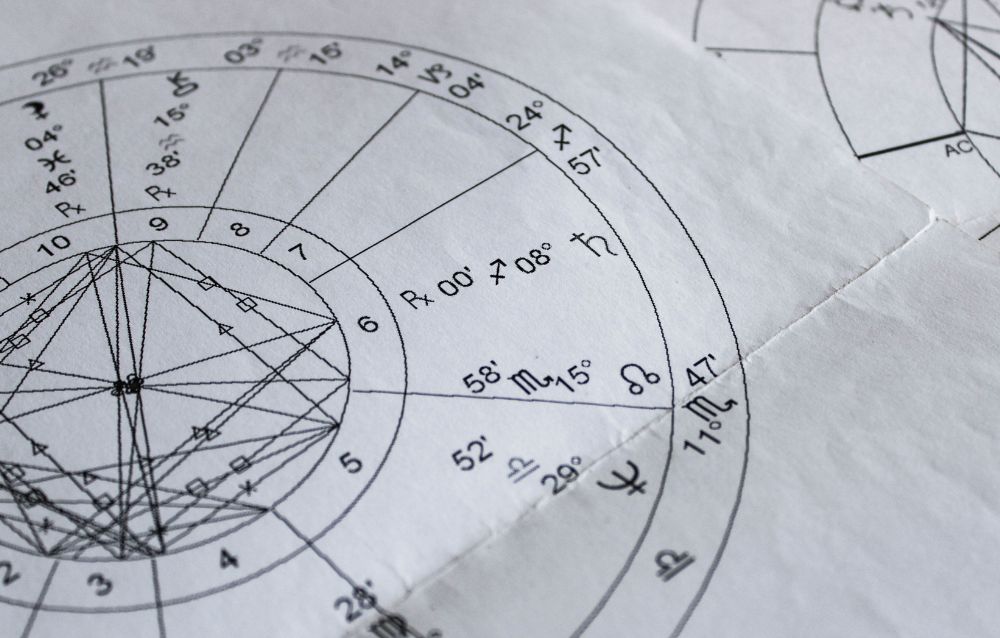The Power of Astrocartography Charts

Have you ever wondered why you feel more creative in one city but more focused in another?
Or why certain locations seem to bring you luck while others present constant challenges?
The answer might be written in the stars (literally) through the fascinating practice of astrocartography.
What is Astrocartography?
Astrocartography (also known as locational astrology or astrogeography) represents the intersection of astronomy, geography, and astrology.
This powerful technique maps your natal chart onto the Earth’s surface, creating a personalized geographic blueprint that reveals how different locations may influence your life experiences, relationships, career opportunities, and overall well-being.
Developed in the 1970s by American astrologer Jim Lewis, astrocartography expanded traditional astrological concepts beyond the confines of birth time and place.
Lewis theorized that planetary energies affect us differently depending on our physical location on Earth, creating what he called “planetary power lines” that crisscross the globe.
As Mark Twain once observed, “The difference between the right word and the almost right word is the difference between lightning and a lightning bug.”
Similarly, the difference between the right and wrong location for you can be equally dramatic according to astrocartography principles.
The Science Behind the Stars
At its core, astrocartography operates on a straightforward principle: when you were born, the planets were positioned at specific angles relative to Earth.
An astrocartography chart projects these angles onto a world map, creating lines that represent where each planet was directly overhead (Midheaven), directly below (Imum Coeli), rising on the eastern horizon (Ascendant), or setting on the western horizon (Descendant) at your birth moment.
These four angles create a grid of planetary influence across the world, with each line representing a particular type of energy. For instance:
- Venus lines may highlight areas favorable for love, creativity, and harmony
- Jupiter lines often indicate locations for growth, opportunity, and abundance
- Saturn lines might represent places of discipline, structure, and sometimes limitation
- Mars lines can indicate regions of high energy, drive, and sometimes conflict
The mathematical precision behind these calculations gives astrocartography its analytical foundation, transforming abstract astrological concepts into tangible geographic guidance.
Understanding Your Astrocartography Chart
When you first look at an astrocartography chart, you’ll notice a world map overlaid with numerous colored lines running vertically and horizontally.
Each line represents a specific planetary influence at one of the four angles mentioned above. The result resembles a cosmic roadmap of your potential experiences across the globe.
Key Components of an Astrocartography Chart:
- Planetary Lines: Each planet from your natal chart creates four lines (Midheaven, Imum Coeli, Ascendant, and Descendant) that circle the globe.
- Crossings/Intersections: Where two or more planetary lines intersect, the energies combine to create potent “power points” on your map.
- Paran Lines: These horizontal lines represent where two planets were at equal distances from an angle at your birth, creating significant energy corridors.
- Planetary Aspects: The relationship between planetary lines can indicate harmonious or challenging energies in different regions.
Understanding these elements requires both technical knowledge and intuitive interpretation. As astrologer Donna Cunningham notes,
“Astrology doesn’t tell you what will happen, but rather what energies are available to work with.”
How to Read Your Astrocartography Chart
Interpreting an astrocartography chart involves several layers of analysis:
Step 1: Identify Your Planetary Lines
Each planet in your chart creates four lines on your map. First, determine which planets you want to focus on based on your goals:
- Seeking romance? Focus on Venus lines
- Career opportunities? Examine Jupiter, Saturn, and Sun lines
- Creative inspiration? Look at Neptune and Venus
- Personal transformation? Pluto lines may be significant
Step 2: Understand the Angle Types
The same planet creates different effects depending on which angle it occupies:
- Midheaven (MC) lines: Affect your public life, career, and reputation
- Imum Coeli (IC) lines: Influence your home life, family, and emotional foundations
- Ascendant (ASC) lines: Shape how you present yourself and approach new situations
- Descendant (DSC) lines: Impact your relationships and how others perceive you
For example, Venus on an MC line might enhance your professional image and bring career opportunities related to beauty or the arts, while Venus on an IC line might create a beautiful, harmonious home life.
Step 3: Analyze Line Intersections
Where planetary lines cross, their energies combine in powerful ways. A Jupiter-Venus intersection could indicate an area of tremendous opportunity for love and abundance, while a Saturn-Mars crossing might present challenging but potentially strengthening circumstances.
Step 4: Consider Nearby Influences
Even if you’re not directly on a line, proximity matters. Generally, planetary influences extend approximately 500 miles on either side of a line, with the effect diminishing as you move away.
Practical Applications of Astrocartography
Beyond mere curiosity, astrocartography offers practical guidance for numerous life decisions:
Relocation Decisions
Perhaps the most common application is determining optimal locations for moving or relocating. By understanding which planetary energies dominate different areas, you can choose locations that support your personal and professional goals.
For instance, if you’re seeking career advancement, areas under positive Jupiter or Sun Midheaven lines might prove beneficial. If healing and emotional growth are priorities, nurturing Moon or Neptune IC lines could provide supportive environments.
Travel Planning
Not ready to relocate? Astrocartography excels at identifying promising destinations for travel, sabbaticals, or temporary stays.
Many people use their charts to plan:
- Romantic getaways (Venus lines)
- Writing or creative retreats (Mercury/Neptune lines)
- Spiritual pilgrimages (Neptune/Jupiter lines)
- Career-boosting business trips (Sun/Jupiter MC lines)
Timing Considerations
Advanced astrocartography also incorporates timing elements, examining how transiting planets might temporarily activate certain areas of your chart.
This can help you determine not just where to go, but when to go there for maximum benefit.
Case Studies: Famous Examples
The effectiveness of astrocartography is perhaps best illustrated through real-world examples:
Ernest Hemingway found his creative voice in Paris, which sat directly under his Mercury (communication) Descendant line, explaining the profound literary influence this location had on his work.
Madonna’s rise to fame occurred after moving to New York City, which falls under her Jupiter Midheaven line – a classic indicator of public success and expansion.
Barack Obama has his Jupiter Ascendant line running through Washington D.C., suggesting this location would enhance his personal presence and bring opportunities for growth – as evidenced by his political ascent.
Creating Your Own Astrocartography Chart
To generate your personal astrocartography chart, you’ll need:
- Accurate birth data: Date, exact time, and precise location of birth
- Professional software or services: While simplified versions exist online, comprehensive charts typically require professional astrology software or consultation with an experienced astrologer
Many professional astrologers specialize in locational astrology and can provide not just the technical chart but also skilled interpretation of what it means for your specific circumstances.
Beyond the Basics: Advanced Considerations
As you delve deeper into astrocartography, several nuanced factors enhance interpretation:
Planetary Dignity and Condition
A planet’s essential nature in your natal chart affects how its lines manifest. A well-aspected, dignified Venus creates more favorable Venus lines than a challenged Venus would.
Local Space Astrology
This complementary technique uses a different calculation method to create directional lines emanating from any location, providing additional insight into how energies flow within specific areas.
Geodetic Equivalents
This advanced concept suggests that geographic locations have inherent planetary associations based on their longitude, creating an underlying energetic “personality” for places regardless of your personal chart.
Common Misconceptions
Despite its usefulness, several misunderstandings about astrocartography persist:
- Myth: Living on a favorable line guarantees success or happiness.
- Reality: Planetary lines activate potentials but don’t override free will or personal responsibility.
- Myth: Challenging lines should always be avoided.
- Reality: Difficult lines often provide valuable growth opportunities and can be navigated successfully with awareness.
- Myth: Astrocartography works for everyone equally.
- Reality: Some individuals appear more geographically sensitive than others, experiencing more pronounced effects from location changes.
Integrating Astrocartography with Traditional Astrology
For holistic understanding, astrocartography works best when considered alongside your complete natal chart.
Your inherent tendencies, strengths, and challenges provide essential context for how different locations might affect you.
As astrologer Robert Hand notes, “Astrocartography doesn’t change who you are – it changes how your innate qualities express and develop in different environments.”
Your Personal Cosmic Roadmap
Astrocartography offers a unique perspective on how location influences destiny, providing a valuable tool for making informed choices about where to live, work, travel, and grow.
While not deterministic, this cosmic mapping system highlights potential pathways and pitfalls across the globe, empowering you to select environments that support your personal evolution and life goals.
Whether you’re considering a major move, planning a transformative journey, or simply curious about how different places might affect you, an astrocartography chart offers invaluable insights into the geographic expression of your cosmic blueprint.
After all, as the ancient wisdom suggests: “As above, so below.”
Your personal stars shine differently depending on where on Earth you stand beneath them.






